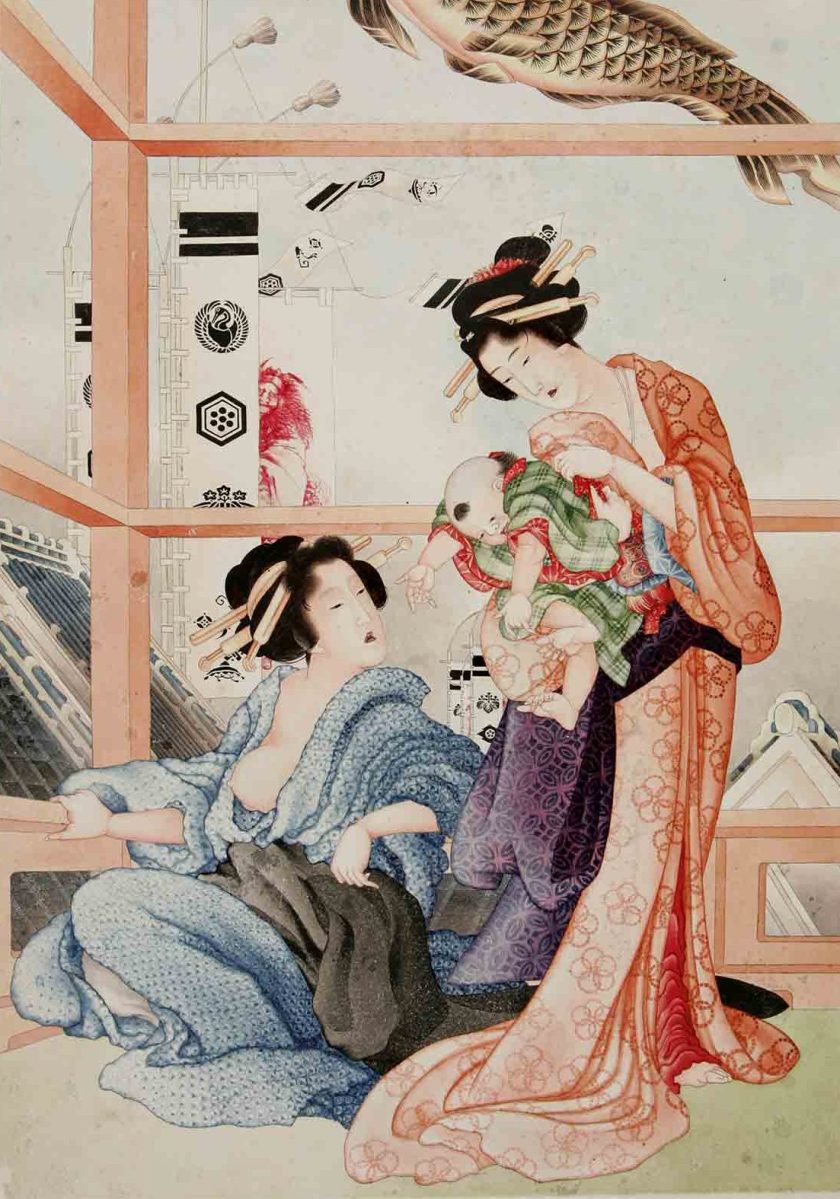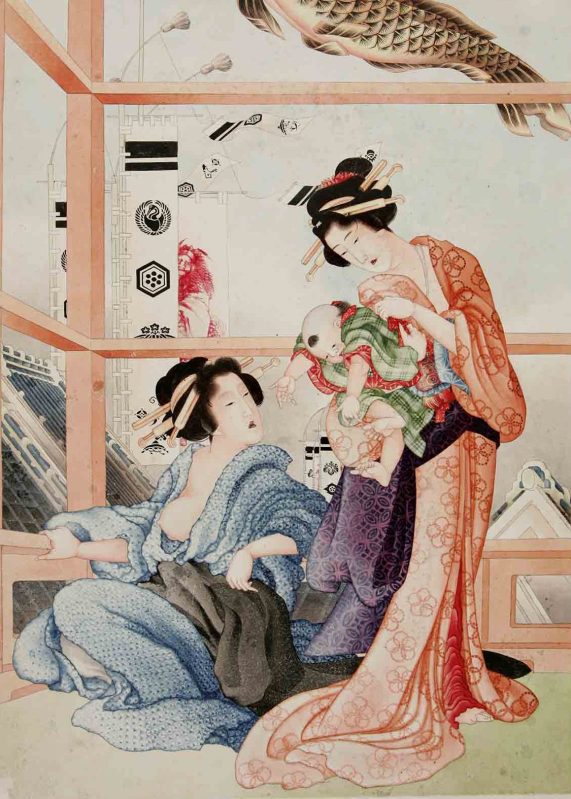One of the most iconic pieces of non-Western art, “The Great Wave” (pictured above) has all but defined artist Katsushika Hokusai’s career. In 2008, the British Museum acquired the best impression of the woodblock print, and is now inviting visitors to return for more of the Japanese artist’s masterworks. But to shed much-needed light on his other pieces, the museum is making patrons hunt for Hokusai’s famed wave.
It wasn’t until “The Great Wave,” part of a print series Thirty-Six Views of Mt. Fuji, was unveiled in 1832 that Hokusai became a premier Japanese artist. Prior to that, struggles in his personal life—from the death of his wife to health troubles and financial woes (possibly due to his grandson’s gambling debts)—spilled over into his professional career. Even when Hokusai’s now-famous print was first produced, it was not immediately well received among the Japanese art community, because prints were not considered fine art. In fact, at that time, it would’ve sold for “just a bit more than a double helping of soba noodles,” said Tim Clark, head of Japanese art at the British Museum, in an interview with The Telegraph.
With woodblock prints more popular in the West, Hokusai borrowed European techniques to create his famous piece. For example, the use of deep perspective and Prussian blue pigment were both imported, and that made the piece more desirable to foreign audiences.
But it wasn’t until a devastating tsunami in 1896, caused by the Sanriku earthquake, that “The Great Wave” gained popularity across the globe. Christine Guth, author of Hokusai’s Great Wave: Biography of a Global Icon, noted:
“Reported worldwide, it brought home to Europeans and Americans the dangers of a natural disaster previously known only at a distance. While photographs testified to the damage and loss of life the tsunami caused on land, they could not capture the wave itself, leaving its appearance up to the viewer’s imagination.”
Waves. Two ceiling panels for a festival cart, ink and color on paulownia wood, 1845 (Courtesy The British Museum)
Despite the natural disaster lending a hand to the print’s prominence, many Japanese historians insist “The Great Wave” doesn’t depict a tsunami; there is no evidence that Hokusai intended that with the piece. The source of confusion might actually stem from early, mistranslated reports that spoke of 19th-century Japanese influence on Monet and Van Gogh being part of a “nouvelle vague,” or “new wave.”
The exhibition, entitled Hokusai: Beyond the Great Wave, looks to delve into the last 30 years of the artist’s life (1820-49), a period during which he was exceptionally prolific. The first of its kind in the United Kingdom, the exhibition will explore Hokusai’s personal beliefs; spiritual and artistic quest through his paintings; and the artist’s drawings, woodblock prints, and illustrated books.
Many of the works on display—depicting a variety of images such as Japanese women, deities, and flora and fauna—have never been seen before in England. Some can only be exhibited for short periods of time due to their light sensitivity—”the Great Wave” was removed from public view in 2011 for this same reason, but will be on display for the exhibition. Get an early preview of what’s going to be on display in the images below.
‘Poppies from Large Flowers,’ color woodblock, 1831-1832 (Courtesy The British Museum) ‘Clear day with a southern breeze’ (‘Red Fuji’) from ‘Thirty-six Views of Mt. Fuji, color woodblock, 1831 (Courtesy The British Museum) ‘Kohada Koheiji from One Hundred Ghost Tales,’ color woodblock, 1833. (Courtesy The British Museum) (left to right) Shōki painted in red. Hanging scroll, ink, and red pigment on silk, 1846, ‘Dragon in rain clouds’; Hanging scroll, ink and color on paper, 1849, ‘Dragon rising above Mt. Fuji’; Hanging scroll, ink and slight color on silk, 1849. (Courtesy The British Museum)

Purchase tickets and learn more about Hokusai: Beyond the Great Wave, which runs from May 25 to August 23, here.
—RealClearLife Staff
This article was featured in the InsideHook newsletter. Sign up now.
























